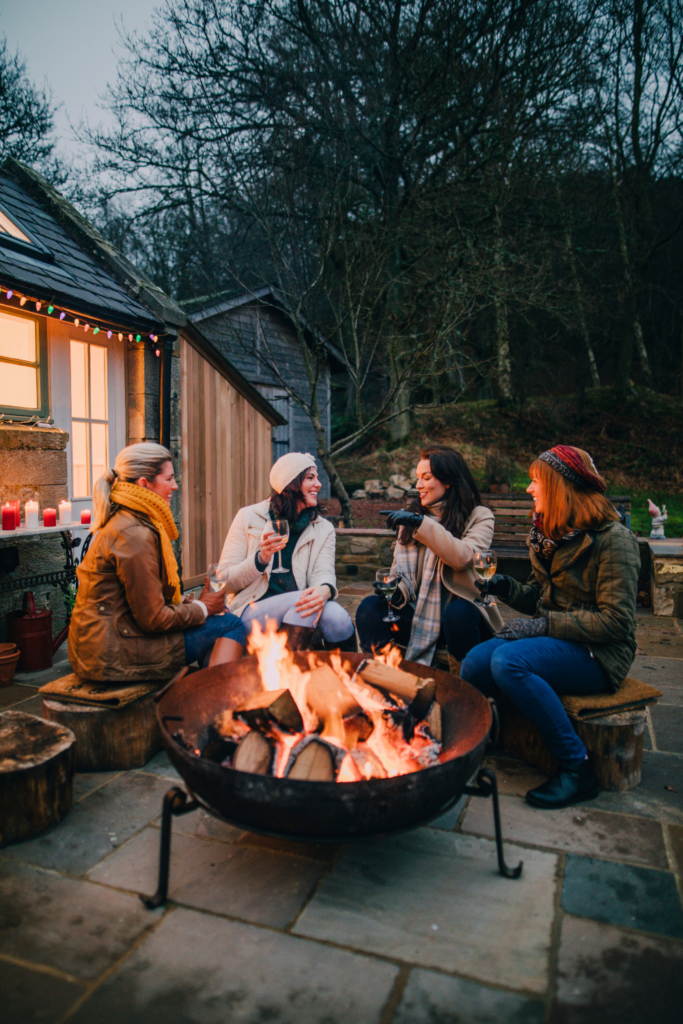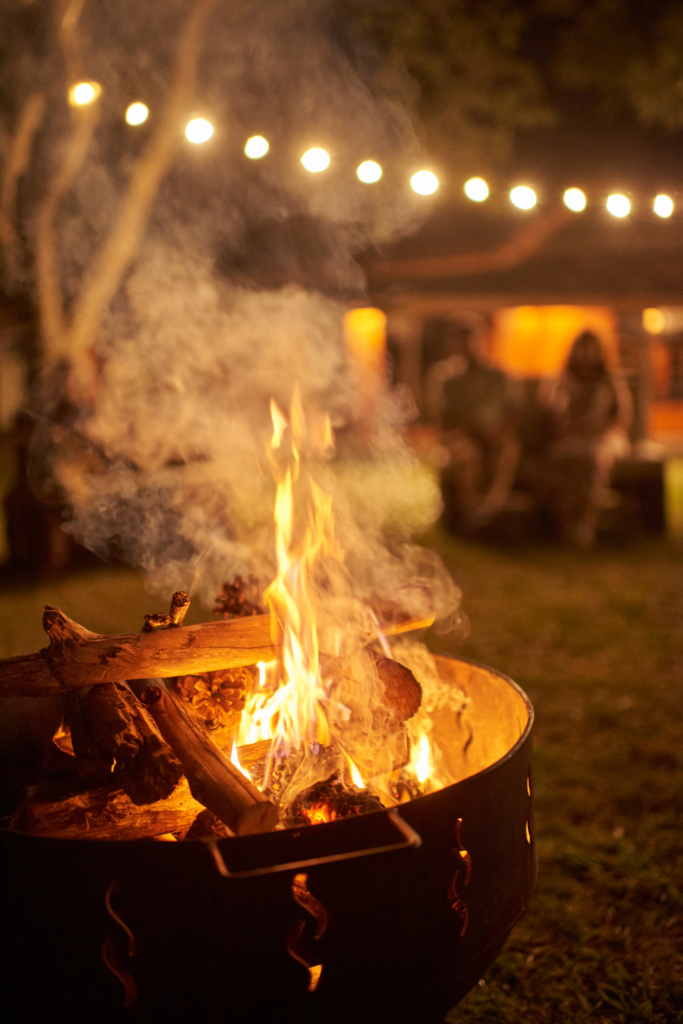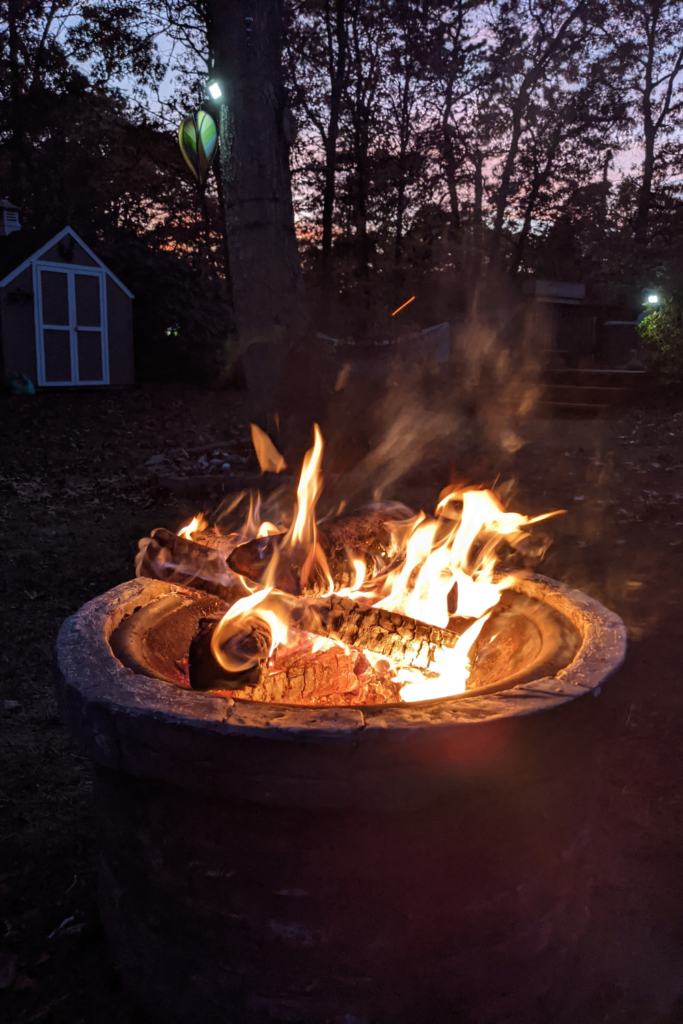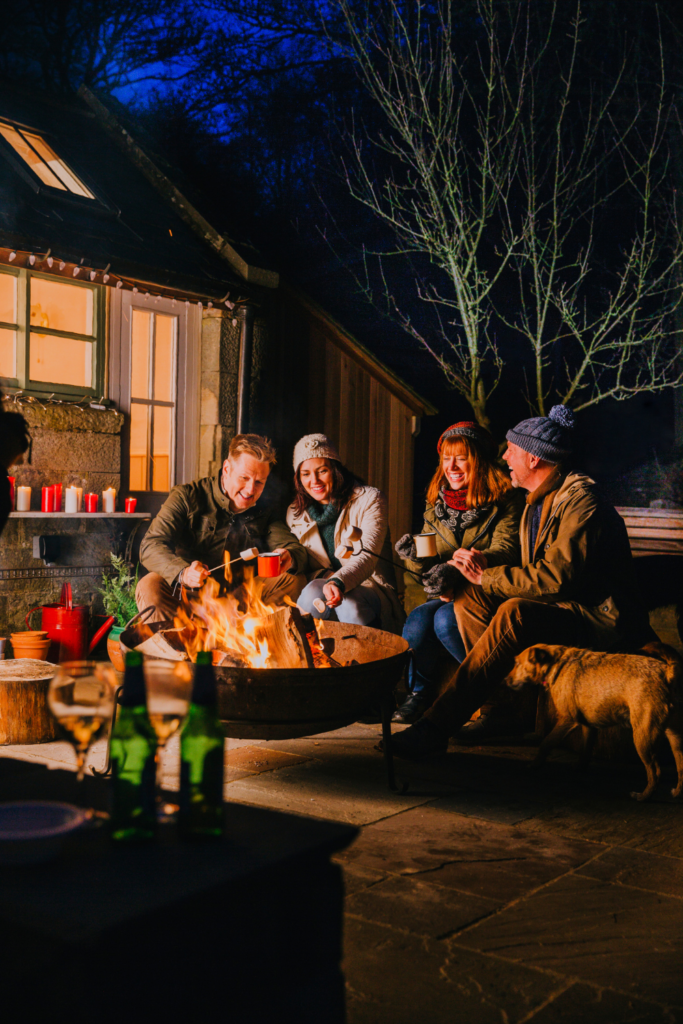Backyard Fire Pit Ideas and Supplies Needed to Build Them

Introduction to Backyard Fire Pits
In recent years, backyard fire pits have become increasingly popular as a charming addition to outdoor spaces. These pits, filled with fire’s warm glow, not only extend the usability of patios and gardens into early spring and late autumn but also elevate the overall ambiance of any area. Beyond acting as a source of heat during cooler nights, fire pits serve as a focal point, fostering a cozy atmosphere where friends and family can gather to enjoy each other’s company.
The allure of a fire pit lies in its dual functionality: it is both practical and aesthetically pleasing. As a source of warmth, it makes outdoor living spaces viable well beyond the warmer months. Equally, the mesmerizing flames of the fire add a relaxing, visually captivating element to one’s garden or patio. Furthermore, fire pits can be tailored to seamlessly match the aesthetic and design preferences of the homeowner, making them a versatile addition to any landscape.
This blog post will delve into various backyard fire pit ideas, exploring different types, designs, and materials that can be used to construct them. We will also detail the essential supplies needed to build a fire pit, touching on safety considerations to keep in mind. Whether you are considering a simple fire ring or a more intricate, custom-built fire feature, this guide aims to provide comprehensive insights and practical advice to help you make informed decisions. Thus, ensuring that your backyard fire pit not only enhances your outdoor living but also becomes a cherished spot for communal enjoyment.
When considering backyard fire pit ideas, homeowners have a plethora of options to explore. One of the most traditional types is the in-ground fire pit. These are set directly into the ground, often lined with stone or brick to provide a rustic aesthetic. The in-ground design is usually cost-effective.However, it requires more effort to install and may not be as portable as other options.
Above-ground fire pits are another popular choice. These can be constructed using materials like stone, brick, and metal. One significant advantage of above-ground designs is their versatility; they can be moved and repositioned as desired. On the downside, they can be more expensive due to the additional materials and construction required.
For those seeking flexibility, portable fire pits are an excellent option. Made from materials like metal, these designs are easy to transport, allowing for temporary setups and minimal installation effort. Portable fire pits are ideal for various outdoor gatherings, though they might lack the permanence and durability of built-in models.
Built-in fire pits provide a permanent feature in the backyard, often incorporated into patio designs and outdoor living spaces. These designs can be constructed from materials such as brick, stone, or concrete, offering a high level of customization and aesthetic appeal. The primary drawback is cost, as built-in fire pits tend to be more expensive and require professional installation.
Each type of fire pit has its advantages and disadvantages. In-ground pits are cost-effective but less portable. Above-ground versions offer versatility yet can be costly. Portable fire pits are flexible and easy to set up but might not match the durability of built-in pits. Meanwhile, built-in fire pits provide a stunning, permanent outdoor feature but demand more investment and professional help. By carefully evaluating your needs, budget, and the overall vision for your outdoor space, you can select the fire pit design that perfectly complements your backyard.

Design Inspiration for Fire Pits
When it comes to creating a captivating backyard fire pit, the design possibilities are virtually endless. Whether you lean towards a rustic, modern, or traditional aesthetic, there are myriad ways to infuse personality and style into your outdoor space. Drawing from real-life projects and designer portfolios can ignite your imagination and provide practical insights.
For those enamored with rustic charm, consider a fire pit built from natural stone or brick. These materials not only blend seamlessly with the natural landscape but also offer durability and timeless appeal. Pairing the fire pit with wooden seating, such as logs or rustic benches, enhances the earthy aesthetic. Adding surrounding elements like gravel pathways or wooden pergolas can further accentuate the traditional feel.
Modern fire pit designs often showcase sleek lines and minimalist features. Think clean, geometric shapes crafted from materials like concrete or metal. Integration of built-in seating or lounge chairs upholstered in weather-resistant fabric keeps the design functional while maintaining a contemporary edge. Enhancing the look with ambient lighting or water features can create an inviting, modern sanctuary in your backyard.
Traditional fire pit designs focus on classical elements and symmetry. A circular or square brick fire pit with stone or concrete seating arranged in a concentric layout provides an organized, visually pleasing appeal. Landscaping with lush greenery, such as trimmed hedges or flowering plants, complements the traditional aesthetic. Adding wrought iron chairs or classic wooden rocking chairs can further embed a sense of timeless elegance.
DIY-friendly fire pits offer a more personalized touch, allowing you to craft a custom piece that reflects your personal style. Repurposing materials like old metal drums, tractor wheels, or cinder blocks can yield unique and exciting results. Creative touches like mosaic tiling or hand-painted designs add character to the finished product. Arranging casual seating with colorful cushions or Adirondack chairs can transform the space into an inviting haven for friends and family.
Incorporating complementary landscaping features can enhance your fire pit’s ambiance. Elements like stone pathways, flower beds, or small ponds create a cohesive and aesthetically pleasing environment. By carefully considering the design elements and incorporating various materials, shapes, and seating arrangements, you can construct a backyard fire pit that is not only a visual delight but also a cornerstone for memorable gatherings.
Safety Considerations
Building a fire pit in your backyard can be a rewarding and enjoyable project, but it is crucial to prioritize safety to prevent accidents and ensure a pleasant experience. When planning your fire pit, the first and foremost consideration should be its placement. Ensure that the fire pit is situated at a safe distance from any structures, such as your home, fences, and sheds. It is generally recommended to maintain at least a 10-foot clearance radius to minimize the risk of fire spreading to these structures. Additionally, the fire pit should be placed away from low-hanging branches and other flammable vegetation.
Choosing the right fuel for your fire pit is another essential safety aspect. Wood and gas are the most common options, each with its own safety requirements. If using wood, select well-seasoned hardwoods that burn consistently and produce fewer sparks. Avoid burning softwoods like pine or cedar, which can crackle and send embers into the air. For gas fire pits, ensure that the gas lines are properly installed and maintained, following manufacturer guidelines to the letter.
Equipping your backyard setup with necessary safety supplies is non-negotiable. A fire extinguisher should be readily accessible and in good working condition. Spark screens can aid in preventing stray embers from escaping the fire pit, reducing the risk of wildfires. Additionally, keep a bucket of sand or a garden hose nearby to manage any unexpected flare-ups promptly.
Lastly, be informed about local regulations and permits related to fire pits. These rules often include guidelines on fire pit size, fuel type, and usage periods. Ignoring local ordinances not only poses safety risks but may also lead to fines. Contact your local fire department or municipal office to acquire the necessary permits and ensure your fire pit meets all stipulated safety codes.
By carefully considering these safety measures, you can enjoy a warm, inviting fire pit in your backyard while minimizing potential hazards.
Essential Supplies and Tools
Creating a backyard fire pit involves careful planning and the right assortment of supplies and tools. To ensure a safe, functional, and aesthetically pleasing fire pit, you need to gather the necessary materials and tools before commencing the project. Below is a comprehensive list of essentials for constructing different types of fire pits.
First, selecting the correct materials for the fire pit’s structure is crucial. Bricks are a common choice due to their durability and ability to withstand high temperatures. Concrete pavers are another versatile option, offering varied shapes and sizes for a custom design. Metal fire rings provide a robust and fireproof framework, preventing the dispersion of flames and ensuring the longevity of your fire pit. Furthermore, gravel is indispensable for creating a stable and level base, promoting effective drainage and preventing the fire pit from shifting.
Having the correct set of tools is equally important. A shovel is essential for digging out the pit’s location and preparing the ground. It aids in removing soil, rocks, and debris, ensuring a clear and level surface. A leveler is critical to ensure that your fire pit is even, preventing structural issues. The mallet is used for firmly setting bricks and pavers into place, ensuring they are securely positioned.
Other essential tools include a tape measure, for accurate measurements and layout, and a tamper for compacting the gravel base. Additionally, fire-resistant adhesive can be used to secure rocks or bricks together, enhancing the stability of the fire pit. Sourcing these tools and materials is relatively straightforward, with most items available at local hardware stores or home improvement centers. Many specialty items, such as metal rings, can also be sourced online from reputable retailers.
By assembling these crucial supplies and tools, constructing your backyard fire pit can become a structured and rewarding endeavor. Proper preparation not only simplifies the building process but also ensures the fire pit’s safety, functionality, and aesthetic appeal.

Step-by-Step Construction Guide
Building a fire pit in your backyard can significantly enhance your outdoor living space and provide a cozy destination for social gatherings. To construct a basic fire pit, follow this step-by-step guide, ensuring careful attention to detail at each stage to avoid common pitfalls.
1. Site Selection and Preparation
Choose a flat, open area in your backyard that is at least 10 feet away from any structures, trees, or other flammable materials. Clear the site of debris and vegetation. Measure and mark a circular area using stakes and a string or a garden hose. For a standard fire pit, aim for a diameter between 36 and 44 inches.
2. Digging the Foundation
Once the site is marked, dig a hole about 6 to 12 inches deep within the marked circle. This will serve as your fire pit’s foundation. Lay a 2-3 inch layer of gravel at the bottom of the hole to promote drainage and prevent water accumulation. Compact the gravel using a tamper to ensure a solid base.
3. Laying the First Layer
Start by laying the first layer of fire bricks or pavers around the perimeter of the hole. Fire bricks are highly recommended due to their resistance to high temperatures. Ensure that each brick is level and snug against neighboring bricks, making adjustments as needed. Use a level to verify the evenness of the entire layer.
4. Building the Walls
Continue to stack the bricks in a circular pattern, staggering the joints for stability, much like building a traditional brick wall. Apply a thin layer of heat-resistant mortar to each brick before setting it in place. Use a trowel to smooth and remove any excess mortar. Repeat this process until your fire pit wall reaches a height of approximately 12–18 inches above ground level.
5. Adding Finishing Touches
After the walls are complete, inspect the fire pit for any gaps or uneven areas, filling them with mortar as necessary. For additional stabilization, you may backfill the exterior wall with soil, gravel, or sand. Inside the pit, add another layer of gravel to aid in drainage. Allow the fire pit to cure for at least 24-48 hours before using it to ensure the mortar hardens properly.
With these steps, you’ll have a solid, functional fire pit to enjoy for years. Remember to always adhere to local regulations and safety guidelines when building and using your fire pit.
Maintenance and Upkeep
To ensure the longevity and safety of your fire pit, proper maintenance and upkeep are crucial. Regular maintenance begins with the most fundamental task: cleaning out ashes. Ashes should be allowed to cool completely before being removed, preferably after each use or at least once they accumulate to a significant level. This prevents any hindrance in airflow, which is essential for maintaining a consistent and safe fire.
Inspecting your fire pit for damage is another routine task that cannot be overlooked. Periodically check for cracks, rust, or other signs of wear. Fire pits made from metal are susceptible to rust, requiring occasional inspections and, if needed, the application of high-temperature paint to inhibit further corrosion. Stone or brick fire pits require inspections for any shifting or crumbling, ensuring the structural integrity is maintained.
Protection from the elements is vital, especially in varying weather conditions. When not in use, cover your fire pit with a protective cover to shield it from rain, snow, and debris. For fire pits that are stationary and heavy, consider investing in a custom-fit cover that provides full coverage.
Seasonal maintenance enables your fire pit to perform optimally long-term. In the spring and summer, verify that the fire pit is free from any debris that could obstruct ventilation or impact combustion. In autumn, clean the pit thoroughly to remove any leaves or organic material that could potentially cause flare-ups. Winter months call for more rigorous protection against harsh weather; if the fire pit is portable, store it in a garage or shed to prevent damage from freezing temperatures.
Portable fire pits, particularly those made of lightweight metals or other portable materials, benefit significantly from being stored during the off-season. Ensure they are completely cool and free from ash before moving them to a dry storage area. By following these maintenance strategies, your fire pit will not only provide enjoyment for many seasons but also ensure that each use is safe and efficient.

Enhancing the Fire Pit Experience
Crafting the perfect backyard fire pit setup goes beyond just the fire itself. To create a truly enjoyable experience, it’s essential to consider a few additional features and thoughtful enhancements. Comfortable seating around the fire pit plays a crucial role in making this area inviting. Opt for weather-resistant furniture, such as cushioned chairs or benches, to ensure longevity and comfort. Alternatively, you can incorporate natural elements like stone seating or wooden log benches to complement the rustic ambiance.
Ambient lighting is another key element in elevating the fire pit experience. String lights, lanterns, or solar-powered garden lights can add a warm, welcoming glow to the area. These lighting options not only enhance visibility but also contribute to creating a cozy atmosphere, perfect for evening gatherings.
Practical accessories, such as fire pokers and marshmallow roasting sticks, are essential for both safety and enjoyment. Fire pokers allow for easy maneuvering of logs, ensuring that the fire burns evenly. Marshmallow roasting sticks, on the other hand, are a fun addition, enabling guests to toast marshmallows and make s’mores, a classic campfire treat.
Landscaping around the fire pit can transform the area into a serene retreat. Consider using gravel or flagstone to create a designated fire pit space. Adding plants and shrubbery nearby can provide a natural barrier and enhance the overall aesthetics. Low-maintenance plants like succulents or ornamental grasses are ideal choices, as they require minimal upkeep.
When it comes to entertaining, the fire pit offers endless possibilities. From storytelling sessions to enjoying live music, the options are plentiful. For a culinary twist, try cooking over the open flame. Simple yet delicious recipes include foil packets filled with vegetables and seasonings, or skewered meats and vegetables for kebabs. Don’t forget the classic campfire treats like s’mores and roasted marshmallows, which are always a hit with guests of all ages.
By incorporating these elements, you can create a welcoming and enjoyable fire pit area that not only serves as a focal point for your backyard but also offers a perfect setting for memorable gatherings with family and friends.
